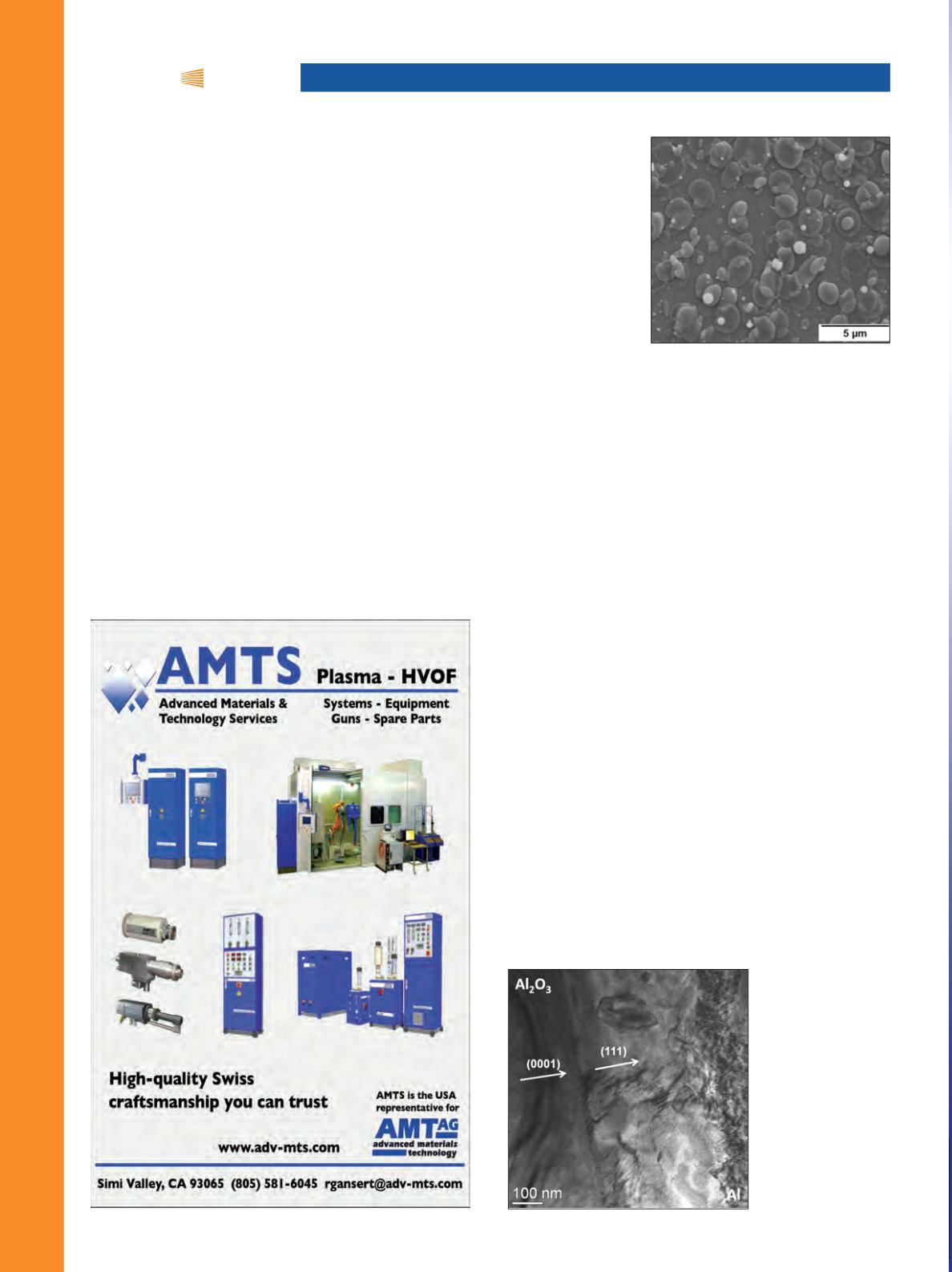

JTST
HIGHLIGHTS
high temperatures in contrast to YSZ. Mg-Al-spinel deposition
by SPS results in columnar-structured coatings, which were
tested for their thermal cycling lifetime. The influence of
substrate cooling during the spray process on thermal cy-
cling behavior, phase composition, and stoichiometry of
Mg-Al-spinel was also investigated.
“Tailoring the Spray Conditions for Suspension Plasma
Spraying”
A. Joulia, W. Duarte, S. Goutier, M. Vardelle, A. Vardelle,
and S. Rossignol
Plasma spray using suspensions as liquid feedstock al-
lows deposition of finely structured coatings with improved
properties compared to that of coatings deposited by con-
ventional plasma spray techniques. The evaporation of the
solvent, acceleration, heating, and melting of fine solid par-
ticles within the plasma jet take place in a shorter time, as
the substrate is located closer to the plasma torch when a
mono-cathode mono-anode plasma torch is used, while
liquid material processing globally consumes more energy
than powder materials. In this study, a large range of plasma
spray conditions were used to achieve yttria-stabilized zir-
conia coatings by suspension plasma spray. The properties
of the plasma jet
(velocity, enthalpy,
and stability) as well
as those of droplets
(trajectories, num-
ber, and size) and
particles (velocity)
were measured and
correlated to the
coating microstruc-
ture. The operating
conditions
neces-
sary for obtaining
disk-shape
splats
and achieving ho-
mogeneous coatings are described including plasma jet
properties and substrate parameters.
“Interface Characterization and Bonding Mechanisms of Cold
Gas-Sprayed Al Coatings on Ceramic Substrates”
R. Drehmann, T. Grund, T. Lampke, B. Wielage, K. Manygoats,
T. Schucknecht, and D. Rafaja
Research aims to contribute to the understanding of
adhesion mechanisms, which take effect at the interface of
cold gas-sprayed metallic coatings on ceramic substrates.
Former investigations reveal the possibility to deposit
well-adhering metallic coatings on atomically smooth ce-
ramics, meaning that mechanical interlocking is not al-
ways a necessary precondition for bonding. A combination
of recrystallization processes induced by adiabatic shear
processes and heteroepitaxial growth might explain high
observed adhesion strengths. The present work examines
the interface area of cold gas-sprayed aluminum on various
ceramic substrates using SEM and HRTEM. Besides sintered
corundum plates, single-crystalline sapphire substrates
with defined lattice orientations were used as substrates for
coating deposition. In addition to Al2O3 substrates, alumi-
num coatings were also deposited on AlN, Si3N4, and SiC
to investigate whether different amounts of ionic bonds in
these substrate materials influence the substrate/coating
interface formation.
Interface of
(0001)-oriented
sapphire with
(111)-oriented PVD Al
coating (TEM image).
Directions normal
to the lattice planes
(determined by XRD
pole figures) are
indicated by arrows.
SEM micrograph of YSZ splats collected
at 30 mm from nozzle exit. Arc current:
600 A. Plasma gas composition: Ar
(77%)-He (33%). Substrate: 400°C.
i T S S e
| a d v a n c e d m a t e r i a l s & p r o c e s s e s | F E B R U A R Y 2 0 1 5
1 6
iTSSe
|
TSS


















